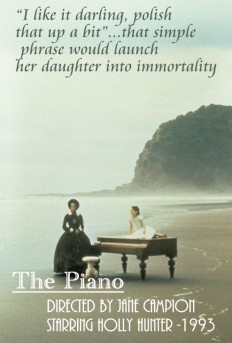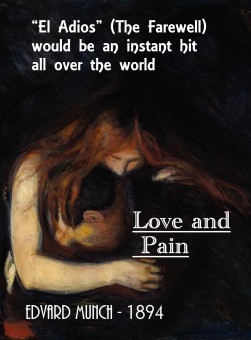1916, April 3 – BIRTH OF MARUJA PACHECO HUERGO
 Singer, Composer, Pianist, Author (Aries) –“I like it darling, polish that up a bit”, she said…little did she suspect that, that simple phrase cast at her daughter who was improvising at the piano while she sat on her favorite rocking chair knitting, would launch her daughter Maruja to immortality…it was 2 AM in the morning and Maruja had, had a long day but it was in still of the night that she did her best work but this night would be different, she would make history…she would piece together the tango “El Adios” which would be an instant hit and be recorded by a variety of musicians not only in Latin America but as far away as Japan…it continues, to our very day, to be a favorite in milongas world-wide…interestingly, she did not think she was very good at composing tango and very soon abandoned the field to devote herself to a wide array of music; she recorded over 600 songs in different genres…for example, she composed and recorded ”Jugetes Musicales” (Musical Games) designed to entertain and educate for children…
Singer, Composer, Pianist, Author (Aries) –“I like it darling, polish that up a bit”, she said…little did she suspect that, that simple phrase cast at her daughter who was improvising at the piano while she sat on her favorite rocking chair knitting, would launch her daughter Maruja to immortality…it was 2 AM in the morning and Maruja had, had a long day but it was in still of the night that she did her best work but this night would be different, she would make history…she would piece together the tango “El Adios” which would be an instant hit and be recorded by a variety of musicians not only in Latin America but as far away as Japan…it continues, to our very day, to be a favorite in milongas world-wide…interestingly, she did not think she was very good at composing tango and very soon abandoned the field to devote herself to a wide array of music; she recorded over 600 songs in different genres…for example, she composed and recorded ”Jugetes Musicales” (Musical Games) designed to entertain and educate for children…
***
She composed “Little Musical Bible”, which consisted of twelve songs based on the old testament…she wrote the music for films and appeared in at least two, “Ronda De Estrellas” directed by Jack Davison and “Gran Camarado” directed by Yago Blas…although her tango compositions were not extensive, they included a number of hits working with renown orchestras including Juan D’arienzo, Florindo Sassone, and Edgardo Donato to name just a few…for some compositions, “Cuando Silba El Viento” for example, she wrote both the music and the lyrics; a rare talent among musicians of the epoch…she was a very popular singer and actress on radio dramas; in fact in 1938 in a campaign to identify “Miss Radio” she got over 30,000 votes, which was a rather significant number for those days…she performed on a number of radio stations but her home was Radio Belgrano…”El Adios” was first recorded by Ignacio Corsini, a family friend but it was the version by Edgardo Donato which would render it internationally famous
of the epoch…she was a very popular singer and actress on radio dramas; in fact in 1938 in a campaign to identify “Miss Radio” she got over 30,000 votes, which was a rather significant number for those days…she performed on a number of radio stations but her home was Radio Belgrano…”El Adios” was first recorded by Ignacio Corsini, a family friend but it was the version by Edgardo Donato which would render it internationally famous
_________________
- CLICK HERE– http://www.youtube.com/watch?v=-K55iCKaFeQ to hear Maruja’s biggest hit “El Adios” performed by the Edgardo Donato Orchest

















